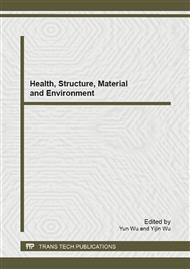[1]
LI Pin-fang, CHEN Lu-ling, LIN Rong-cheng, HUANG Jia-iiang, 2004. Discussion on the prevention of pollution from ship's ballast water around Xiamen seawaters. Journal of Dalian Maritime University, 30(3): 103-105.
Google Scholar
[2]
McCollin T, Shanks A M, Dunn J, 2007. The efficiency of regional ballast water exchange: Changes in phytoplankton abundance and diversity. Harmful Algae, 6(4): 531-546.
DOI: 10.1016/j.hal.2006.04.015
Google Scholar
[3]
Smit M G D, Ebbens E, Jak R G, Huijbregts M J A, 2008. Time and concentration dependency in the potentially affected fraction of species: The case of hydrogen peroxide treatment of ballast water. Environmental Toxicology and Chemistry, 27(3): 746-753.
DOI: 10.1897/07-343.1
Google Scholar
[4]
Tang Z, Butkus M A, Xie Y F, 2009. Enhanced performance of crumb rubber filtration for ballast water treatment. Chemosphere, 74(10): 1396–1399.
DOI: 10.1016/j.chemosphere.2008.11.048
Google Scholar
[5]
Sutherland T F, Levings C D, Elliott C C, Hesse W W, 2001. Effect of a ballast water treatment system on survivorship of natural populations of marine plankton. Marine Ecology Progress Series, 210: 139–148.
DOI: 10.3354/meps210139
Google Scholar
[6]
Holm E R, Stamper D M, Brizzolara R A, Barnes L, Deamer N, Burkholder J A M, 2008. Sonication of bacteria, phytoplankton and zooplankton: Application to treatment of ballast water. Marine Pollution Bulletin, 56(6): 1201-1208.
DOI: 10.1016/j.marpolbul.2008.02.007
Google Scholar
[7]
Arslan-Alaton I, Hande Gursoy B, Schmidt J E, 2008. Advanced oxidation of acid and reactive dyes: Effect of Fenton treatment on aerobic, anoxic and anaerobic processes. Dyes and Pigments, 7(2): 117-130.
DOI: 10.1016/j.dyepig.2007.11.001
Google Scholar
[8]
Aleboyeh A, Olya M E, Aleboyeh H, 2008. Electrical energy determination for an azo dye decolorization and mineralization by UV/H2O2 advanced oxidation process. Chemical Engineering Journal, 137(3): 518-524.
DOI: 10.1016/j.cej.2007.05.016
Google Scholar
[9]
Sadik W A, Nashed A W, 2008. UV-induced decolourization of acid alizarine violet N by homogeneous advanced oxidation processes. Chemical Engineering Journal, 137(3): 525-528.
DOI: 10.1016/j.cej.2007.05.018
Google Scholar
[10]
Huang Yimin, Yu Xin, Zhao Hui, et al, 1999. COMPARISION STUDY OF DAMAGING EFFECT OF FENTON SYSTEM AND H2O2 ON MOLECULLAR RHEOLOGY OF RBCs MEMBRANE. Chinese Journal of Biomedical Engineering, 18(1): 49-57.
Google Scholar
[11]
Donghai Wu, Hong You, Jiaxuan Du, Chuan Chen, Darui Jin, 2011. Effects of UV/Ag-TiO2/O3 advanced oxidation on unicellular green alga Dunaliella salina: Implications for removal of invasive species from ballast water. Journal of Environmental Sciences, 23 (3): 513-519.
DOI: 10.1016/s1001-0742(10)60443-3
Google Scholar
[12]
Huafeng Yu, Guangming Liu, Hong Huang, 2012. Activity Assay of microalgae heterosigma akashiwo in Ballast Water by Neutral Red Staining Using the UV and UV/O3 as Inactivation Methods. Advanced Materials Research Vols. 573-574: 1079-1085.
DOI: 10.4028/www.scientific.net/amr.573-574.1079
Google Scholar
[13]
General Administration of Quality Supervision, Inspection and Quarantine of the people's Republic China, 2007. The specification for marine monitoring — Part 7: Ecological survey for offshore pollution and biological monitoring (GB 17378. 7-2007). 24-25.
Google Scholar
[14]
General Administration of Quality Supervision, Inspection and Quarantine of the people's Republic China, 2007. The specification for marine monitoring — Part 7: Ecological survey for offshore pollution and biological monitoring (GB 17378. 7-2007). 28-30.
Google Scholar
[15]
R. Iranpour, G. Garnas, O. Moghaddam, A. Taebi, 1999. Hydraulic Effects on Ultraviolet Disinfection: Modification of Reactor Design. Water Environment Research, 71(1): 114-118.
DOI: 10.2175/106143099x121607
Google Scholar


